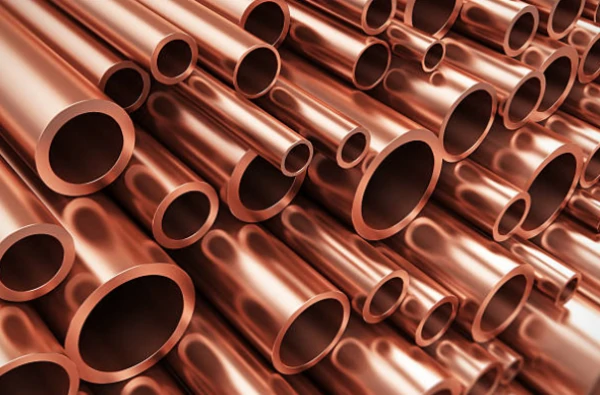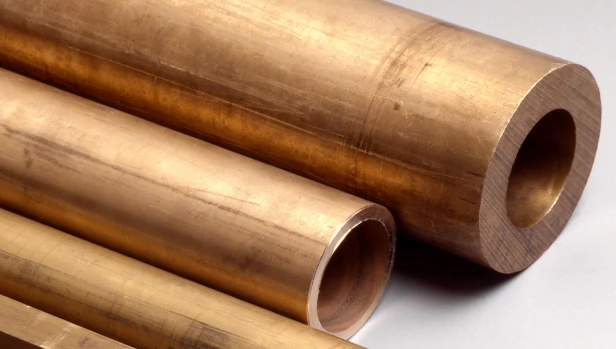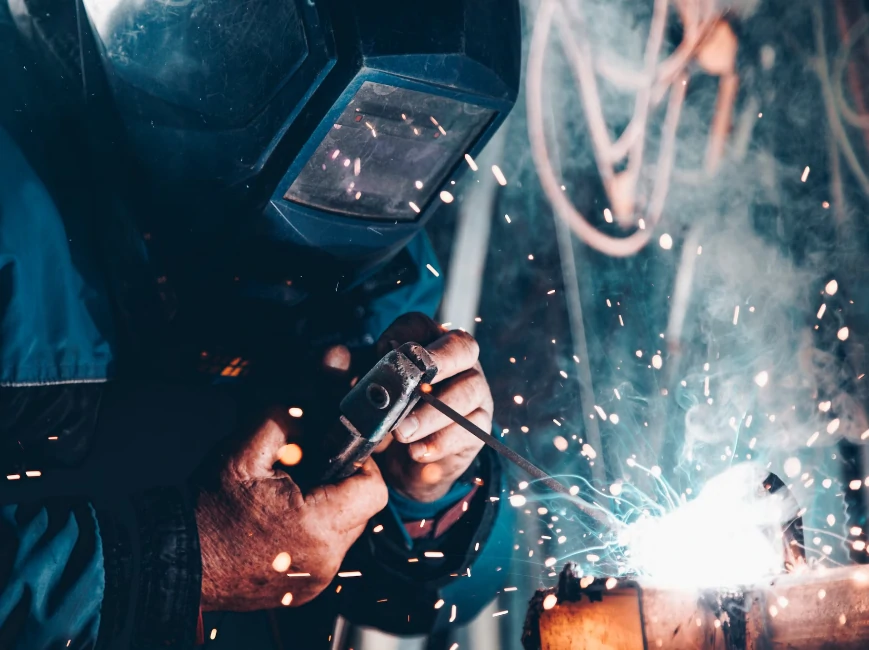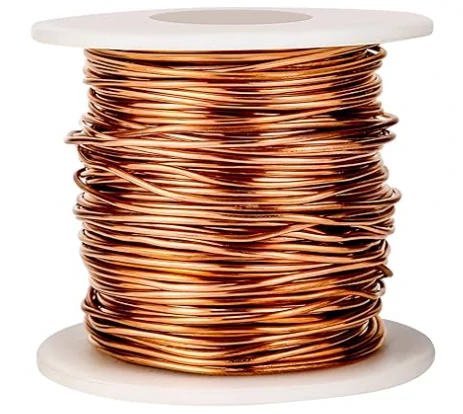Copper, brass, and bronze, which of these metal materials is best for manufacture? If you got confused answering that question, this guide is for you!
While some people generally classify them as “red metals,” these metal materials have significant differences in properties like machinability and thermal conductivities.
For instance, copper metals have better machinability than brass, which is more machinable than bronze. Similarly, copper has better thermal conductivity than brass but lesser thermal conductivity than bronze.
How do we determine the metal material comparison of copper vs brass vs bronze? Keep reading this guide for the answer.
Which is better: Copper vs Brass vs Bronze?
This section compares based on the available grades of copper, brass, and bronze metals.
Grades of Copper

Correct material comparison of copper requires identifying the different grades or alloys. The most common ones are:
- Alloy 101: this grade of copper is oxygen-free and exhibits excellent electrical conductivity and ductility properties.
- Alloy 110: it is sometimes called electrolytic copper and demonstrates the highest thermal and electrical conductivity. Suitable for applications requiring good ductility and formability.
- Alloy 122: copper alloys 122 are similar to copper grades 110 but with higher formability and weldability properties.
- Alloy 145: another name for alloy 145 is tellurium copper because of its 0.7 percent tellurium. These copper grades exhibit excellent thermal and electrical conductivities with superior formability.
Grades of Brass

There are different grades of brass depending on the specific compositions of the copper and zinc constituents. The most common brass alloys are:
- Alloy 260: another name for alloy 260 is cartridge brass that comprises approximately 70% copper and 30% zinc with trace amounts of lead and tin. It has applications in automobiles and hardware.
- Alloy 272: also known as yellow brass, alloy 272 has approximately 37% zinc and 62-65% copper, depending on the trace amounts of lead, tin, nickel, and iron present. It has a variety of uses in industrial manufacturing.
- Alloy 330: the brass composition of alloy 330 is an estimated 65% copper, 33% zinc, and 2% trace amounts of lead. It has cold working characteristics that make it suitable for piping.
- Alloy 353: it is very similar to the alloy brass composition of alloy 330. Brass grades 353 have approximately 62% copper, 36% zinc, 2% lead, and trace amounts of iron. They have excellent formability.
- Alloy 360: otherwise referred to as the free-cutting brass, alloy 360 is excellent for product valves and fitting applications. The brass alloy composition is 61.5% copper, 35.5% zinc, 3% lead, and trace iron.
- Alloy 464: another name for alloy 464 is naval brass, consisting of 59% to 62% copper, 37% to 40% zinc, and 1% tin. The brass alloy composition makes it suitable for cold and hot working processes.
Grades of Bronze

An effective copper vs brass vs bronze must also include the different alloy compositions. The prevalent grades are:
- Alloy 932: also known as bearing bronze or SAE 660 grade. The bronze alloy 932 consists of approximately 83% copper, 7% to 10% tin, and 3% to 7% lead. Alloy 932 is preferred for machining parts that might be difficult to lubricate frequently.
- Alloy 954: sometimes called aluminum bronze, the bronze alloy 954 consists of an estimated 83% copper, 10% aluminum, 5% iron, 1.5% nickel, and 0.5% manganese. Alloy 954 bronze has excellent wear resistance and high strength.
Material properties of Copper, Brass, and Bronze metals
This section compares copper vs brass v bronze based on their material properties and differences.
Material metal composition
Copper is a naturally occurring non-ferrous metal, unlike brass and bronze, which are metal alloys. The material composition of brass contains copper and zinc. Brass alloys also exist in different grades and could contain slight traces of other elements like lead, silicon, aluminum, tin, and iron.
Similarly, bronze is an alloy of copper and tin, but it sometimes consists of trace amounts of metals like nickel, zinc, and aluminum.
Corrosion resistance
The corrosion resistance is another parameter to evaluate the comparison of copper vs brass vs bronze metals. Copper, in its pure state, forms a protective oxide layer on exposure to air, which creates high corrosion resistance.
Similarly, bronze alloy metals consist of copper and have excellent corrosion resistance, especially aluminum bronze types like alloy 954 grade. Bronze forms a “mottled patina” protective layer on exposure to air and saltwater environments.
On the other hand, brass alloy metals, which also consist of copper, have lower corrosion resistance than bronze and copper metals. However, there are brass alloy grades with better corrosion resistance because of higher trace manganese elements.
Durability
Bronze alloy metals and copper significantly edge over brass regarding durability. However, copper is slightly more durable than the available bronze grades because of its flexibility. You can bend and stretch copper more easily than bronze.
On the other hand, brass is prone to cracking on bending or stretching. It is less durable than the other two metals.
Weight
The material comparison of copper vs brass vs bronze metals gets interesting when considering their weights. Brass has a maximum density of about 8730 kg/cu.m compared to bronze metals with a maximum density of 8900 kg/cu.m.
Copper is the most dense of the three metals with an approximate maximum density of 8960 kg/cu.m. Understand that we considered only the maximum densities since the values could vary depending on specific alloy compositions.
Weldability

The respective weldability property of copper vs brass vs bronze metals depends on the specific grades available. The alloy 101 copper is oxygen-free and typically the most easily welded metal.
Brass metals are also easy to weld except for the ones containing significant proportions of lead elements. The same applies to Bronze metal alloys – they can be welded, but bronze consisting of lead is more prone to cracking.
Formability
Otherwise called “machinability,” the formability of copper vs brass vs bronze metals illustrates their respective ease of machining without damage.
Of the three metals, copper has the better formability, which explains why manufacturers use it for micron-sized electrical wires.
Similarly, some bronze alloy metals have good machinability but lesser flexibility than copper materials. However, brass alloys have the least formability compared to copper and bronze.
Mechanical strength of Copper vs Brass vs Bronze metals
The mechanical strength comparison of the three metals is evaluated based on a) tensile strength and b) yield strength
Tensile strength
Bronze significantly edges copper and brass metals in terms of tensile mechanical strength. The tensile strength of bronze alloys is about 350 to 635 MPa, closely followed by brass alloy metals with tensile strength values of 338 to 469 MPa. Copper has the lowest ultimate tensile strength of the three metals, with 210 Mpa tensile strength.
Yield strength
You can also consider the respective yield strengths of copper, brass, and bronze when choosing one for your manufacturing projects. Again, bronze has the highest yield strength of 125 to 800 MPa. The brass alloys come a distant second with yield strength values of 95 to 124 Mpa. Lastly, copper has the smallest yield strength of 33.3MPa.
Melting points of Copper vs Brass vs Bronze metals
While the melting point indicates how much heat the metal can withstand, it also determines its formability. Of the three metal materials, copper has the highest melting point of 1085°C. The next metal is brass alloy, which has a 927°C melting point. Bronze comes last with a melting point of 913°C.
Physical appearance of Copper vs Brass vs Bronze metals
Except for manufacturing experts, differentiating between copper, brass, and bronze metals can be tricky. Although they have similar physical characteristics, we can compare them using color and hardness.
Color
You must pay close attention to observe the color difference in copper vs brass vs bronze metals. Pure copper has a reddish brown color, which is almost like a warm reddish-orange hue.
On the other hand, brass has a golden-yellow color but with the yellow tone having a slight reddish undertone. Bronze is like the reddish-brown color of copper but a dull and less distinctive color shade.
Hardness
The hardness of copper, brass, and bronze metal materials is another comparison factor that could affect their range of industrial applications. We use the Brinell hardness scale for classification.
Copper has a 35 hardness value, while brass scores 55 to 73 on the same scale. However, bronze metal alloys are the hardest, with a scale score of 40 to 420.
Conductivity differences between Copper vs Brass vs Bronze metals
The electrical and thermal conductivity properties are additional methods to the metal material comparison of copper, brass, and bronze metals.
Electrical conductivity
The electrical conductivities of metals are usually compared to a suitable electrical conducting material like copper. Copper is a standard reference – it has 100% electrical conductivity.
Therefore, manufacturing engineers compare electrical conductivities to copper. Brass is 28% as conductive as pure copper, while bronze is less with only 15% electrical conductivity.
Thermal conductivity
Thermal conductivity measures how well the metal can transfer heat through its structure. It is an essential parameter for copper, brass, or bronze metal applications in heat exchangers, cooking utensils, or electrical components.
Brass has the least thermal conductivity of 64 BTU/hr-ft²-°F followed by copper with a thermal conductivity of 223 BTU/hr-ft²-°F. Bronze has the highest thermal conductivity within 229 and 1440 BTU/hr-ft²-°F.
Market costs of Copper vs Brass vs Bronze metals
In addition to the different material properties of copper, brass, and bronze metals, budget also plays an important role. Besides, the metal you choose for manufacture impacts the overall production cost.
For pricing considerations, brass is the least expensive of the three metals. Bronze alloys are more expensive than brass because they contain a significant copper composition. Subsequently, copper is the most expensive of the considered metals.
Industrial applications of Copper vs Brass vs Bronze metals
Learn about the different industrial and domestic applications of copper, brass, and bronze metal materials.
Applications of Copper

Copper metals have excellent electrical and thermal conductivities, corrosion resistance, and durability that make them suitable for applications in:
- Electrical wiring and electronics
- Plumbing systems and water pipes
- Heat exchangers and radiators
- Cookware and kitchen utensils
- Roofing sheets
Applications of Brass

Brass metals have excellent corrosion resistance, aesthetic appeal, durability, and low friction material that makes them suitable for applications in:
- Fittings and valves in plumbing systems
- Musical instruments
- Marine equipment and fittings
- Firearms and ammunition casings
Applications of Bronze

Bronze metals have excellent wear resistance, aesthetics, and low friction properties that make them suitable for applications in:
- Bearings and bushings in machinery
- Marine equipment components like propellers and ship fittings
- Electrical connectors
- Sculptures and artistic molds
Which One Should You Choose: Brass vs Bronze vs Copper?
The table below summarizes the similarities and differences between copper, brass, and bronze metals. Choosing any of these materials for rapid prototyping or product manufacturing requires correctly understanding the already discussed properties.
| Property | Copper | Brass | Bronze |
| Metal composition | Pure copper (99%) + trace elements | Copper + Zinc + trace elements | Copper + Tin + trace elements |
| Physical color | Reddish brown | Golden yellow | Dull reddish brown |
| Corrosion resistance | Excellent | Good | Excellent |
| Weight (max. density) | 8960 kg/cu.m | 8730 kg/cu.m | 8900 kg/cu.m |
| Weldability | Excellent | Good | Fair |
| Formability | Excellent | Good | Fair |
| Yield strength | 33.3 MPa | 95 -124 MPa | 125 – 800 MPa |
| Tensile strength | 210 MPa | 38 – 469 MPa | 350 – 635 MPa |
| Melting point | 1085°C | 927°C | 913°C |
| Hardness | 35 BHN | 55 – 73 BHN | 40 – 420 BHN |
| Electrical conductivity | Very high | 28% of Copper | 15% of Copper |
| Thermal conductivity | 223 BTU/hr-ft²-°F | 64 BTU/hr-ft²-°F | 229 – 1440 BTU/hr-ft²-°F |
| Cost | $$$ | $ | $$ |
For example, copper and brass are preferable to bronze if you want easy and faster CNC machining times. Copper is also more flexible with exceptional corrosive resistance, which allows its use in more precise and delicate designs.
However, copper metal is the most expensive of the three materials. The correct metal material choice is the one that offers a perfect balance of all the mentioned properties with the intended applications.
Longsheng: Select the suitable material for your next metal manufacturing and rapid prototyping
Our Longsheng CNC machining services are always available whenever you need help or expert advice on the correct metal between copper, brass, and bronze. We also help with alternative material selection and provide you with quality manufacturing that works with your budget.
Therefore, reach out for your CNC machining, 3D printing, or sheet metal fabrication projects. You can also upload your design file and receive online price quotes within a few hours.
Conclusion
This metal material comparison guide on the suitability of copper vs brass vs bronze contains everything you need for your next machining project. We extensively discussed the similarities and differences in properties like machinability, thermal/electrical conductivity, and mechanical strengths. However, remember to contact a professional if you need help.


